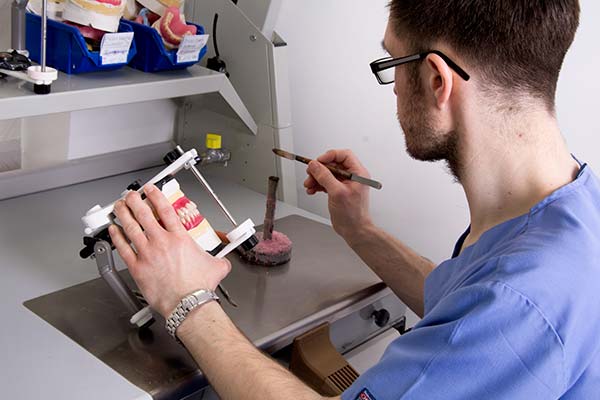My dentures do not fit anymore
-
Bone erosion common enemy of harmonious fit
-
Sore sports can be a considerable inconvenience
-
Dental fixative is not a long-term solution
We often speak about bone erosion when we assess people for dentures or implants retained overdentures – their common complaint: My dentures do not fit any more.
Sometimes the contours within the mouth where natural teeth used to be are challenging, and the ridges used to secure dentures have become flattened.
Other times, erosion of the bone-deep beneath the former natural gum line makes it difficult to place implants. Without first going through a synthetic bone grafting procedure to build up bone, there would not be enough depth of good bone to anchor the implant securely (Don’t worry. it’s a general procedure).
My dentures do not fit anymore
From the moment teeth are removed the process of the bone remodelling begins – even a single extraction has not excused this process.
Initial remodelling could be minor and may retain most of the bony ridge that supported the native this ridge will narrow, becoming sharp and knife-like. In the worst cases, the ridge is absorbed and is flat.
At any point in the erosion process pain can kick in as the initial harmonious fit between dentures and gums is compromised.
Sore spots – we hear of them daily in the Denture Clinic – can be a hugely painful inconvenience and are caused when dentures move around. Fixatives can ease this friction, but ‘glue’ is never a long-term option.
Once the sharp ridge where natural teeth have been is gone, we are left with a smooth bone that is known as the basal ridge.
Initially, this basal ridge is large and sturdy enough to support and hold dentures, although there still may be a problem with occlusion – the way the upper and lower dentures fit together.
The ridge on the upper jaw, the maxilla, angles outward to approach the lower jaw, which angles inward. Initially, these two ridges may contact properly as they did when you had teeth, but as they shrink, the upper jaw may start to fit inside the lower jaw, which contributes to a sunken denture appearance.
This is worsened because the back of the mandible (lower jaw) tends to resorb most, leaving patients without adequate support for your face or bite.
We’ve already mentioned in the Press about the term facelift dentures. It is. of course, spurious and no denture can perform a clinical facelift.
What can occur, however, is with the correct placing of teeth and with the right prosthetic support above them, facial tissue and muscles are pushed back into the correct skeletal position.
The effect is one we have seen hundreds of time, where years have been lost from the ageing process of the face.
At the point where the basal ridge shrinks beyond its ability to support dentures, we would advise stabilisation from implants. Here the denture effectively clips on to two implant abutments and can be put in and taken out by the user.
Just two lower implants at the front of the lower denture can have a dramatic effect on its stability, but sometimes more may be required.
If you have experienced significant bone loss and are no longer happy with the appearance, fit, or function of your dentures, give us a call on 01384 254067.
Our initial consultations are complimentary and our principal, Steven Burchell Dip CDT RCS(Eng) is generous with his time.
We have a talented team of practitioners and dental laboratory onsite. Quality is everything to us – and that includes dentures and patient care. We’re accessible, have ground level surgeries, parking at the rear with a drop-off point right by the door and are disabled friendly.
What have you to lose? Come and see us.




